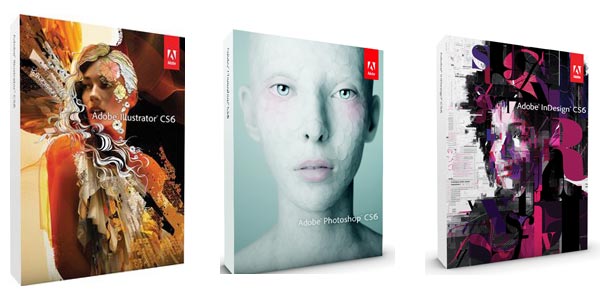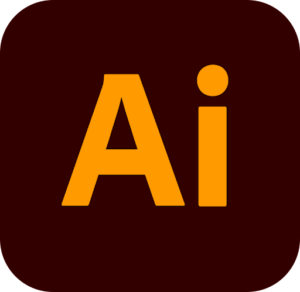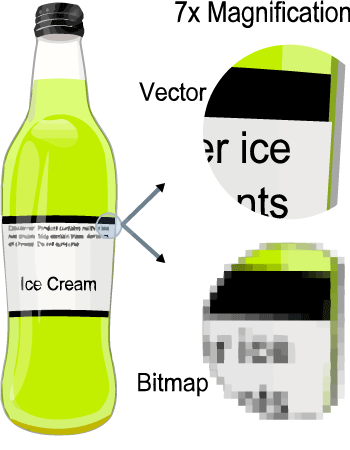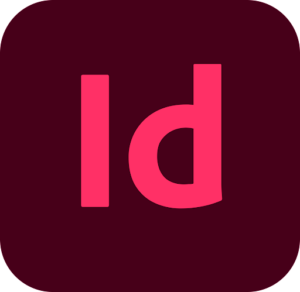Adobe Illustrator, Photoshop or InDesign For Your Logo Design
In the area of graphic design, there are a number of quality software programs that allow users to create stunning designs for an array of applications. For example, Adobe Illustrator, Photoshop and InDesign are easily the most widely used of the available software. However, each of these design programs is uniquely specialized for a niche set of tasks. In short, not all programs are created equal.

Sure, one program may be able to loosely achieve the feats of the others. However, there are inherent strengths and weaknesses within these software programs. Furthermore, these strengths and weaknesses cause one to be a more appropriate tool than the other.
However, it’s really a matter of evaluating the breadth of your project and your desired design deliverables. Identifying the best tool for the job.
Specifically referring to logo design, it’s extremely common for clients to request that designers use Adobe Photoshop for the project. So, that they may be able to edit the logo themselves in the future. For instance, Photoshop is a more accessible and user-friendly program, thus preferred by novice designers. Nevertheless, it is not the appropriate tool for professional logo design.
Why Adobe Illustrator over Adobe Photoshop
Though the answer may not be simple, it is distinct. We’ll discuss the strengths, weaknesses, limitations, and key differences of the three design programs to determine their correct uses.
Adobe Illustrator – Built for Logo Design:
First of all, the most distinct characteristic of Illustrator is that it is a vector drawing tool. This means that the output file is a vector graphic that can be resized to any degree, without losing any quality. As you may have guessed, this is essential for logo design because of the dynamic diversity of its applications. Furthermore, you need the logo to function in spaces as small as a business card but also as big as a billboard. Conveniently, vector files allow for you to shrink or grow the finished design without any deterioration of graphic integrity.

More About Vector Files:
To understand how vector files work. Imagine the software using math to create paths and lines on a grid, like a graph. This creates “control points” that can be used to control the shapes during your design process.
When the design is complete, it is saved to a vector format such as Adobe AI or EPS. Furthermore, these file formats can be considered the master files. Of course, fully editable in the software in which they were created.
Illustrator is also equipped with excellent drawing capabilities that make it the supreme method for crafting more organic, free-flowing forms that are beyond the basic presets of circles and squares Although clients might be intimidated by these advanced features, its ability to create high-quality shapes that can be resized without losing quality makes it the top choice for professional logo design.
Adobe Photoshop – Photo Manipulation & Editing
As the name would suggest, Photoshop is the master when it comes to photo manipulation and editing. Because of this this strength, it is therefore the preferred tool when designing anything marketing material that contains photos such as brochures, posters, postcards, flyers, etc.

Illustrator is best for creating, from scratch, the individual elements that are then laid out within Photoshop to form a greater, more collective document. While Illustrator works mainly with vector files, Photoshop is primarily a raster-based program that produces bitmaps.
More About Raster Graphics:
Raster graphics are synonymous with bitmap graphics, as both essentially refer to computer images that are formed by way of a rectangular grid of pixels or individual points of color.

While Photoshop is not the best for creating professional logos, primarily because of its lack of vector drawing abilities, it is still a potent program. It’s a fantastic application for photographers because of the amazing editing controls that are available for manipulating photographs. It is also a popular program for untrained designers because of the built-in creative filters that allow even a novice user to create something good with very little effort.

Photoshop is great for optimizing graphics
Further, because of its bitmap base, Photoshop is great for web designers. Allowing you to optimize graphics for online usage. This then results in smaller file sizes and subsequently quicker page loading. For instance, web designers can also appreciate that Photoshop provides a relatively easy forum for slicing graphics. Mostly to form individual online elements. These contain for example backgrounds such as backgrounds and buttons. For laying out web pages and wire frames. However, it’s safe to say the learning curve for Photoshop is ultimately quite flat. Since it’s generally cheaper to acquire than Illustrator, it tends to invite less experienced hobbyists than it does logo design professionals.
Despite all its strengths, Photoshop has some weaknesses that need to be addressed. Above all, the glaring when it comes to logo design, it has some weaknesses to be addressed. Above all, the glaring difference here is that when bitmap files are enlarged, they lose quality. As the individual bits get larger, at a certain point in the enlarging process you begin to see a ragged edge (the result of the individual squares that make up the bitmap design, as opposed to a smooth edge formed by a vector image). Obviously, this perceived pixilation becomes a substantial problem when growing an image to the size of a billboard. Knowing this, when it comes to the application of your logo design, Photoshop simply isn’t a suitable software.
Logos must be versatile, but Photoshop lacks vector file support. Thus, creating an original file for a billboard size and shrinking it or remaking the logo for each new size is impractical.
Adobe InDesign – Designing Multi-page Items
Although it is the least common of the three, Adobe InDesign still has its own area of expertise. While Illustrator is ideal for the creation of individual elements and Photoshop is ideal for editing photos or laying out a single-page. InDesign sets itself apart by being the authority on multi-page items. These include elements such as book design, multiple page brochures, annual reports, catalogs, etc.

Despite the fact that it uses many of the same menu items, as the other two programs, the scope of its abilities are quite niche. It is not made for creating elements from scratch, but more specialized in laying out multiple pages of information for the printing process. Use Illustrator and Photoshop to design elements and apply creative photo filters. Then, use InDesign to layout the elements to print in a catalog, since it lacks drawing tools and filters.
Common Misconceptions of Interchangeability:
As the core inspiration for this piece, clients have many misconceptions when it comes to the interchangeability between the aforementioned programs. Although they are all part of the Adobe Creative Cloud, they each yield a different file type that may or may not be compatible with their counterparts. Below are some of the most common misconceptions about working between these programs:
Use Native Programs for Design Editing
It is generally not understood that a design can only be edited using the software in which it was created. Yes, Photoshop and InDesign can import a finalized vector image from Illustrator and then incorporate it into the greater design but, when it comes to actually editing that the individual element, it needs to be done in its native program. Even in knowing that a designer has used Illustrator to design their logo, clients will often ask for an editable Photoshop file. This simply isn’t possible – they were created in different programs and must therefore be edited in their respective programs.
Know the Limitations of Using Photoshop for Vector Graphics in Logo Design
Photoshop files that are imported to Illustrator will not convert to a vector format unless the Photoshop file was originally a vector file. The problem here is that there are a lot of limitations in using Photoshop for vector purposes. However, it can work with certain vector graphics but is ultimately limited in what can be achieved using vectors. Let’s take complex vector images. For examples, are not possible in Photoshop which makes it generally unsuitable for exporting vector logos. For instance, these are generally more complex than Photoshop’s basic pre-set vector shapes. In the end, Photoshop is the most common software of the bunch. Causing clients to gravitate toward its use. Nonetheless, it’s important to understand that there are certain limitations when it comes to interchangeability between softwares. As uncomfortable as it might seem, clients should allow their designers to create in the most appropriate program for the job.
Delivering Final Files:
When it comes to delivering a final logo to a client, you must assume that the client does not know how to edit or convert the file. Next to that, the designer should be aware that the logo will be used on all sizes of materials. With that, rather than send one single file, under the dangerous assumption that the client can “take it from here.” Therefore, I recommend that designers send files in the following formats. Just to ensure the fulfillment of all of their client’s web and print needs. Therefore, avoid assuming clients can handle one file, designers should send files in recommended formats to meet web and print needs.
File formats
Here we outlined the different file formats you have for your clients logo design:
• EPS file – This is the clients master file. It is editable in Adobe Illustrator and it is a vector file, which means it can be resized without loss of quality. This is the file type that will be requested by most professionals.
• PSD file – An export from the EPS file and is not editable. This file can be opened in Adobe Photoshop and has a transparent background.
• PNG file – A file with transparent background but does not require any specialist software to open it.
• TIF file – This file is in CMYK color for lithographic printing. However, take note that this file may appear to be a different color to the other file types but assure them not to worry. I know that this is just because a computer monitor cannot properly display CMYK color (as all computer monitors operate in an RGB language).
• JPG files – Inform the client that they will receive four different JPG files. Informing them that JPG files can be opened on any computer. Making them perfect for home/office use, as they can be imported into Microsoft applications like Word and PowerPoint. Because JPG files do not resize well, try sending them three different sizes, as well as, a grayscale JPG file for Trademark registration.
Excellent to have a variety of file format for the future use of your logo design
Many clients think in the short term about the use of their logo. Providing this variety of file formats will satisfy their needs when it comes to resizing the design for all the different mediums in the future. While the client might only intend to use the new logo on their website, where Photoshop would be suitable. However, history shows that once their business starts to grow, so will the breadth of their marketing plan. With this growth, it is then imperative that businesses look at the big picture for their brand.
Wrapping it up: Adobe Illustrator, Photoshop or InDesign?
After looking at the three different softwares of the Adobe Creative Cloud, we can conclude that Adobe Illustrator gives the client the most flexibility going forward with their brand. While they might not be able to edit the logo in Photoshop, they’ll have a file type that will serve them well, in perpetuity. Although all three have the ability to create logos, the specialized capabilities listed above have solidly slated Illustrator as standard for professional logo designers. Easily the most used program worldwide for vector graphics, this premiere program offers the most flexibility in the long term.
Above all, it is the preferred format when working with professional printers, sign makers and embroiderers alike. With such widespread implementation and dynamic capabilities, it can be said that if you do not have an Illustrator logo, you might as well not have one at all. We at The Logo Company can provide you with a logo design that is applicable to all formats, check out our portfolio to find out more about the logos we create!
